April 30, 2023
- Aristotle
It was August 2022 when I discovered Tai Kwun after riding on the world's longest covered walk escalator at Mid-Level Central. I explored the place in September, and until then, it become my leisure spot when visiting the capital city, Central on weekends.
Come and join me explore Tai Kwun, Hong Kong's Center for Heritage and Art, and learn the history of this historical compound.

The revitalized Tai Kwun, Center for Heritage and Art was opened to the public in 2018. The former Headquarters and Prison Compound during the British colony has been revitalized into one of the most visited attractions in Hong Kong, particularly in the capital city, while retaining its authentic historical features. This isn't just a spot for heritage and art, but as well as a place for nightlife, fancy dining, and shopping, as well as several workshops, creative events, concerts, and art exhibitions.
On the entranceway, the back view of the former Police Headquarters Block facing the street in red bricks and white facades is part of the main attraction. People passing by would definitely notice this enormous historic site.



There are 16 Historic sites, including the three declared monuments conserved and revitalized in this compound as useful facilities. Meanwhile, two new buildings were added with architecture inspired by the historic site. To give you an insight into how huge this former police headquarters and prison compound is, here's a sketch map of the whole compound I found on its wall.

Tai Kwun's Historic Sites
BARRACK BLOCK
Upon entering the place, you would be amazed by this enormous and stunning colonial four-story architecture, Barrack Block, with white facades. This is one of the oldest historic buildings on site completed in 1864 that served as police offices. It is now a popular backdrop for photoshoots and houses the main heritage gallery, story-telling spaces, shops, and restaurants.



Locals and tourists simply come to this place to take photos of its facades and open windows. The front yard now serves as the Parade Ground where events, shows, and concerts are usually held.
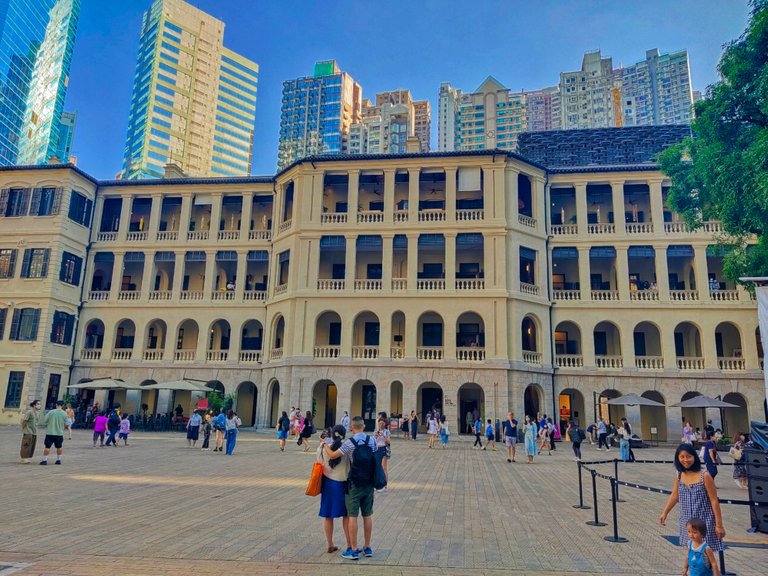
While walking in its hallways, you could imagine policemen relaxing in those barrack spaces back in the day during their free time.

 | 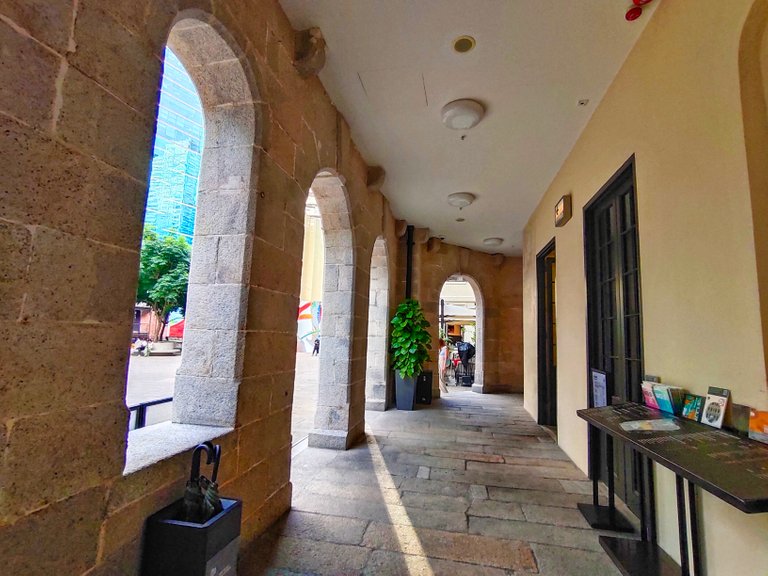 |
|---|

POLICE HEADQUARTERS BLOCK
Meanwhile, on the left side of the Parade Ground is the Police Headquarters Block with red brick walls and architecture that shows authority. This was completed in 1919 and was a former multi-purpose building with offices, dormitories, and a gymnasium. It now houses another story-telling space, shops, and fancy restaurants.

 | 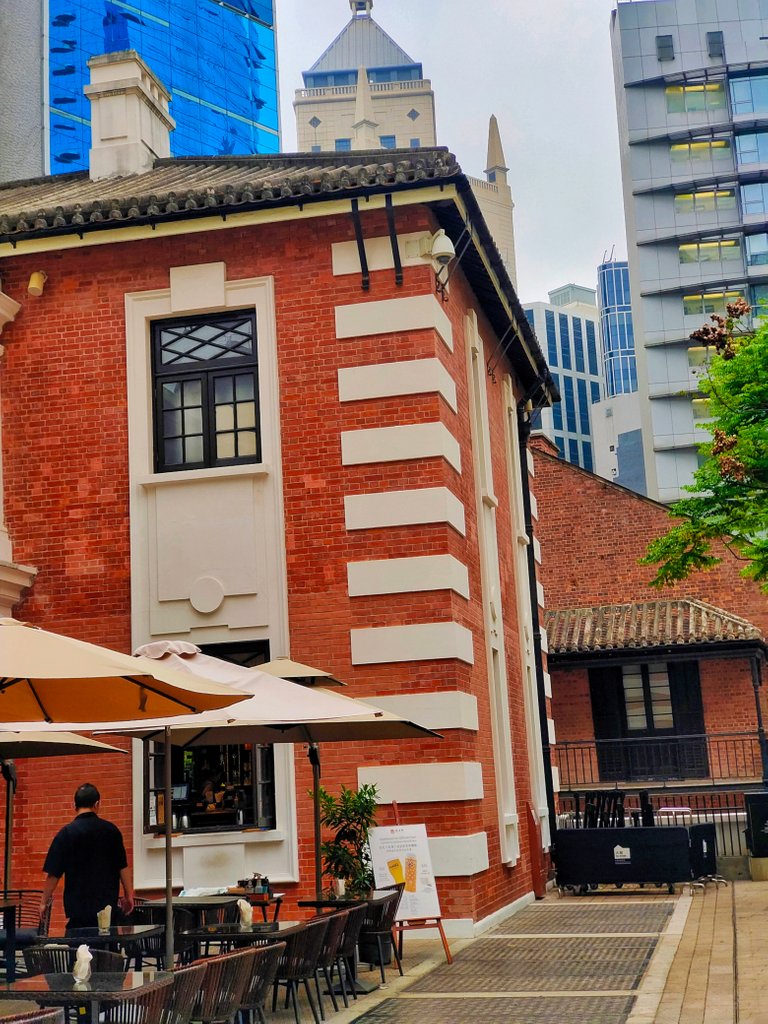 |
|---|

THE ARMOURY
Next to the police headquarters is the Armoury. It's the former Stable Block during the Japanese occupation period and was used by Traffic Division in later years. This now houses Aaharn restaurant on both floors.
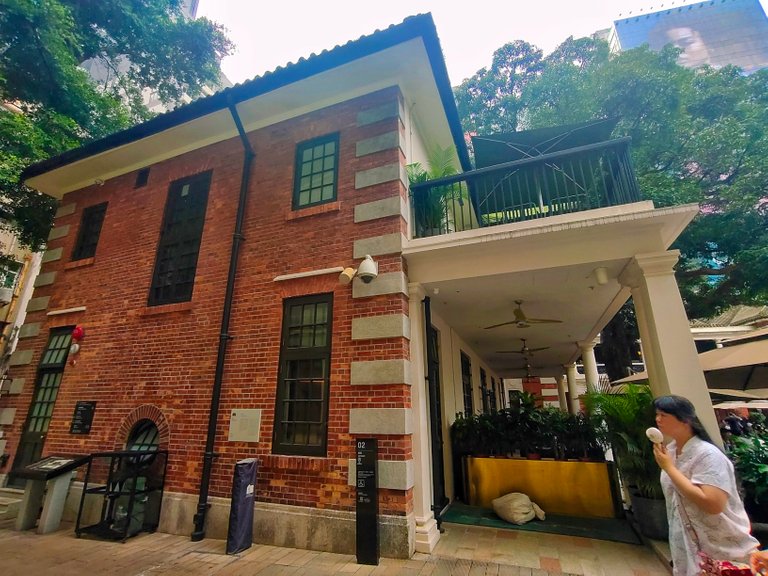
You might be tempted to dine in as the parade ground is surrounded by al fresco restaurants. However, be mindful that those are located in this center for heritage and art, so prices of food are definitely higher compared to those outside the center. Before planning to dine in, it's better to explore the compound and see what lies within this historic place.
Behind the barrack block are more impressive old architecture. And first things I noticed when I first wandered into this place were the narrow alleys and the series of stairs connecting one building and another and giving access to other spots of Tai Kwun.

The main buildings have elevators, but one would definitely take those Instagrammable stairs to explore other parts. These were surely the main access points within the compound back in the day since there weren't elevators yet. You can imagine officers patrolling around, some guarding the corners, and prisoners transporting from one hall to another on those stairs.



It's not me, just my model for that day. This backdrop is one of the popular spots to take Instagrammable photographs.

Some graduating students in academic dress taking photoshoots.

There are different halls in this place and whichever alley you take, you would reach another hall at the end with more attractions to capture and spots to explore.


CENTRAL MAGISTRACY
One of my favorite spots was this part with Greek style. This is the left-side view of the former Central Magistracy that was completed in 1914. From the name itself, this was where the magistrate or civil officer resides back in the day. There was a courtroom and prison cell on the ground floor.



During my last visit, I was able to enter the former Courtroom. It serves as one of the storytelling spaces. There was a large projector screen in front showing animated stories about how trials were held back in the day.

SUPERINTENDENT'S HOUSE
On the other side of the courthouse is the Superintendent's house.
My model for that day. I don't know her actually, lol

It was the former main entrance to the prison. In later years, part of the ground floor was converted into a Prison Chapel.


This now houses one of the fine dining restaurants in Tai Kwun, some shops, staff offices, and back-of-house facilities.

Have you been to a real prison in real life? This was the very first prison I ever visited!
FORMER VICTORIA PRISON COMPOUND: A, B, C, D, E, & F HALL
This prison compound is one of the main highlights of this site. When I first heard about Tai Kwun Prison, I was so curious to see it in real life as I had never been to any real prison before. When I see this alley where a lady was standing at the corner who seemed to be waiting for someone from the hall, I asked myself, "Does the prison still exist until now keeping real prisoners?" That excites me to look for it.

A HALL
By looking at these buildings, I thought the prison cells were on the left side hall surrounded by barbed wires which are typical in prison cells. However, this left side is the A Hall, which was built in 1928 as the functional hall. It served as office space back in the day, and in later years, a chapel was built on the ground floor and an immigration office was the last known use. It now serves as a hall for educational activities.

B HALL
The building next to it is the B Hall which houses prison cells that are still intact up until now. Prison Halls were revitalized and now serve as art exhibition centers. People were queueing to enter the prison hall.

The last time I visited this prison hall, the exhibition called Art Behind Bars was still ongoing. Each cell has projected animation displays showing life in prisons back in the day. You can click the link above to know more about it.

C HALL
Behind me is the C Hall connecting the Superintendent's House. This was the first building to use as the Prison Hospital which was later used as a kitchen and canteen. This now houses staff offices.

D HALL
As I walked towards the back part of the compound, I found the D Hall. This hall was the original radial-plan prison block which housed prison cells, stock cells for rice and water, and a Prison Hospital. It now houses a restaurant, some staff offices, and another storytelling space.



E HALL
Meanwhile, at the E Hall is the Behind Bars, a fancy bar behind bars. The prison cells were revamped and interlinked giving you an infinite feeling. At night, the sides will glow in the dark in different neon colors and the place will transform into a disco bar. Only those with an extra budget can go to this bar. It may look ordinary, but the prices of cocktails, wines, beers, and others are definitely high.

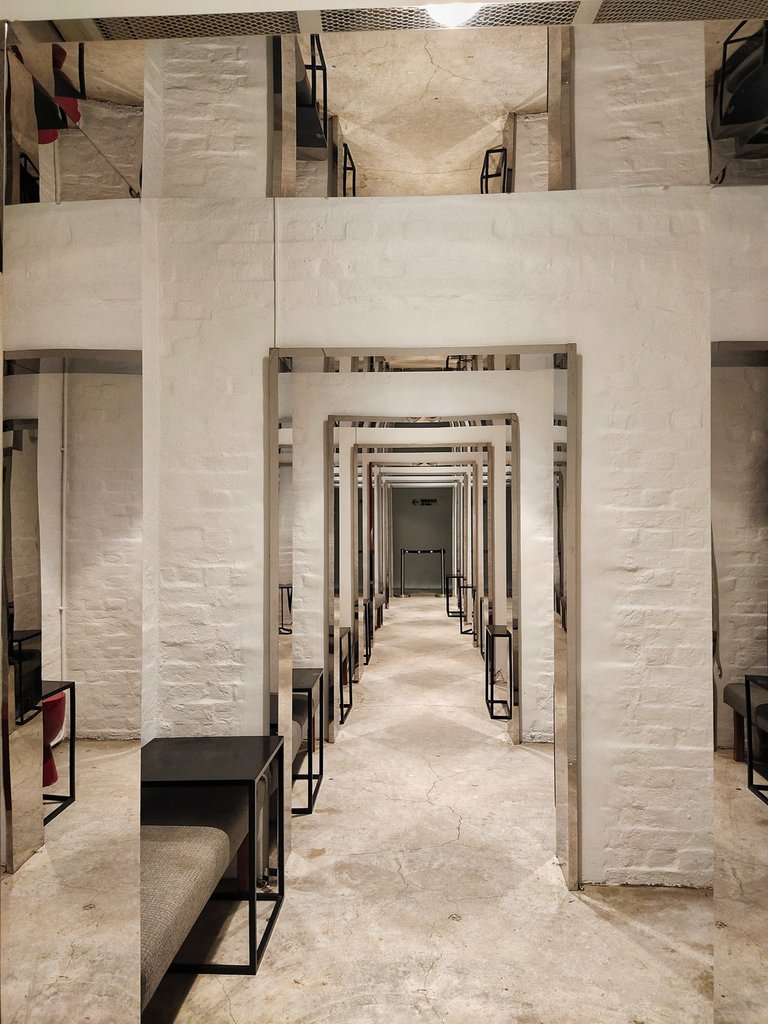
F HALL

Next to JC Contemporary is F Hall built in 1931 and used as a government printing shop and later used as a reception center where convicted prisoners were admitted. Both floors now serve as a storytelling space and exhibition center. There was an ongoing exhibition the last time I visited it, but it wasn't for free so I failed to enter the place.
JC CUBE & JC CONTEMPORARY (newly added buildings)
On both ends of the D Hall are the two newly added buildings - JC Cube and JC Contemporary. In partnership with the government, the Jockey Club sponsored the restoration of this historic site and added these two new buildings, from which they got their name JC. Both serve as exhibition spaces. The exterior of these new buildings was inspired by the original red brick patterns of historic sites.
The JC Contemporary has three floors that house contemporary art galleries, a book library of Asian artists, and a cafe. I had a chance to explore the art gallery and dine in at the cafe the last time I visited Tai Kwun. You shouldn't miss the art exhibitions here in case you visit Tai Kwun someday.




You can check my blogs about JC Contemporary Art Exhibition and Between Coffee Cafe here.
- JC Contemporary Art Exhibition: Exploring LGBTQ+ and Body Politics
- Unplanned Dine In At Between Coffee
The JC Cube serves as the multi-purpose auditorium. The popular attraction in this place is the Laundry Steps. It's the literal laundry space back in the day which was transformed into a more useful facility today. This is also where some events, conferences, seminars, and educational activities are held.


On available days, this covered outdoor space serves as a resting space for visitors. There are coffee tables on the right corner and kiosk machines for buying drinks and snacks. However, it was out of order when I visited the place. And sometimes, this place holds film shows on the weekend featuring curated films. The film shows here can usually be watched for free. I am uncertain though about the others.

And should I say this is also a place for dating? Couples are everywhere in this compound.
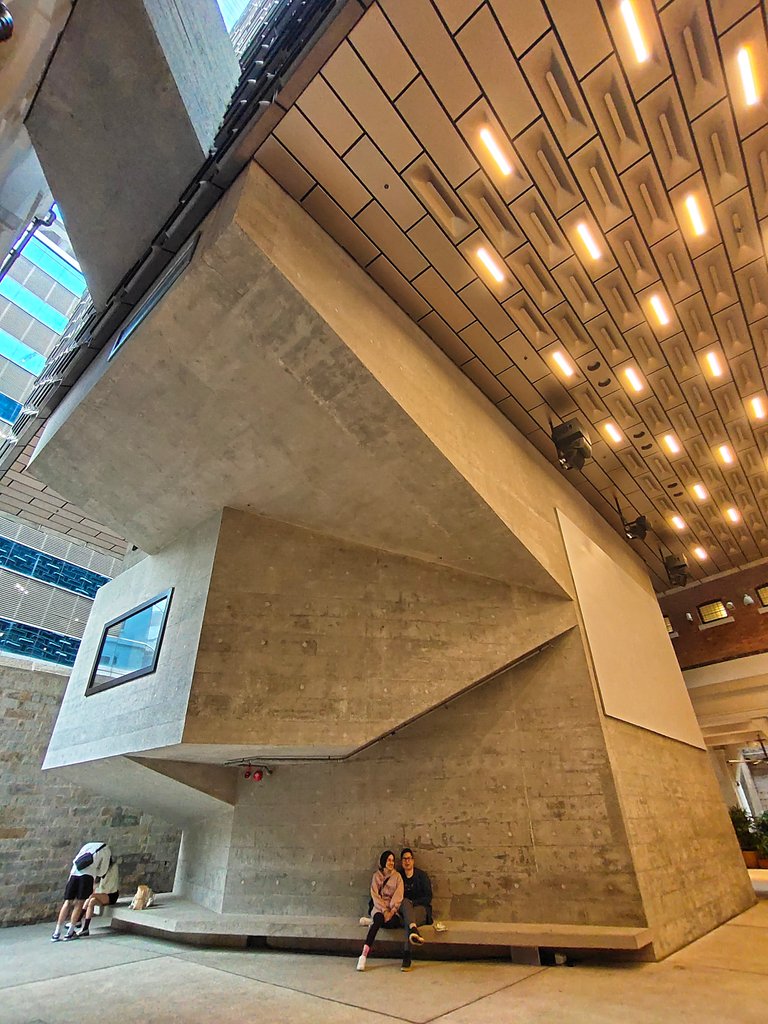
Just last Sunday, I visited the compound again for a reason. The ongoing exhibition was called The Spotlight. Some performers were performing in the prison yard and laundry steps but I didn't understand anything since they were speaking Cantonese, lol.

Some art galleries were closed as they are preparing for a new art exhibition. I would definitely visit this compound again next week when all are already set up.
AIR RAID SHELTER
This wasn't included in the map, I guess, but while exploring spots between narrow alleys one day, I found the Air Raid Shelter. From the name itself, you could tell the usage of this building back in the day. It serves as the shelter of protection against air attack. Since this site was built during the World War era, the shelter was definitely significant for Tai Kwun Police forces.


I traced a narrow corridor and found rooms parallel to each other. Some are even connected and some are closed probably used as staff offices nowadays.

This is one of the shelter rooms which is similar to a prison cell.

The shelter now serves as one of the storytelling spaces showing the history of Tai Kwun and different cases handled by Tai Kwun Police Headquarters, such as drug trafficking cases, opium and gambling, and other stories such as the evolution of Central Magistracy, British Law, Japanese Occupation, and others displayed on its walls.

 |  |
|---|---|
 |  |
MARRIED SARGEANTS' QUARTERS

This block was built in 1896 as the dormitory for married sergeants which was also used as police laundry space after the war. It now houses Tai Kwun's artists-in-residence.
SINGLE INSPECTORS' QUARTERS

This block was built along with the married sergeant's quarters which was initially used as another dormitory. A medical post was built in this block after the war and it now serves as a quarter for artists-in-residence as well.
BAUHINIA HOUSE
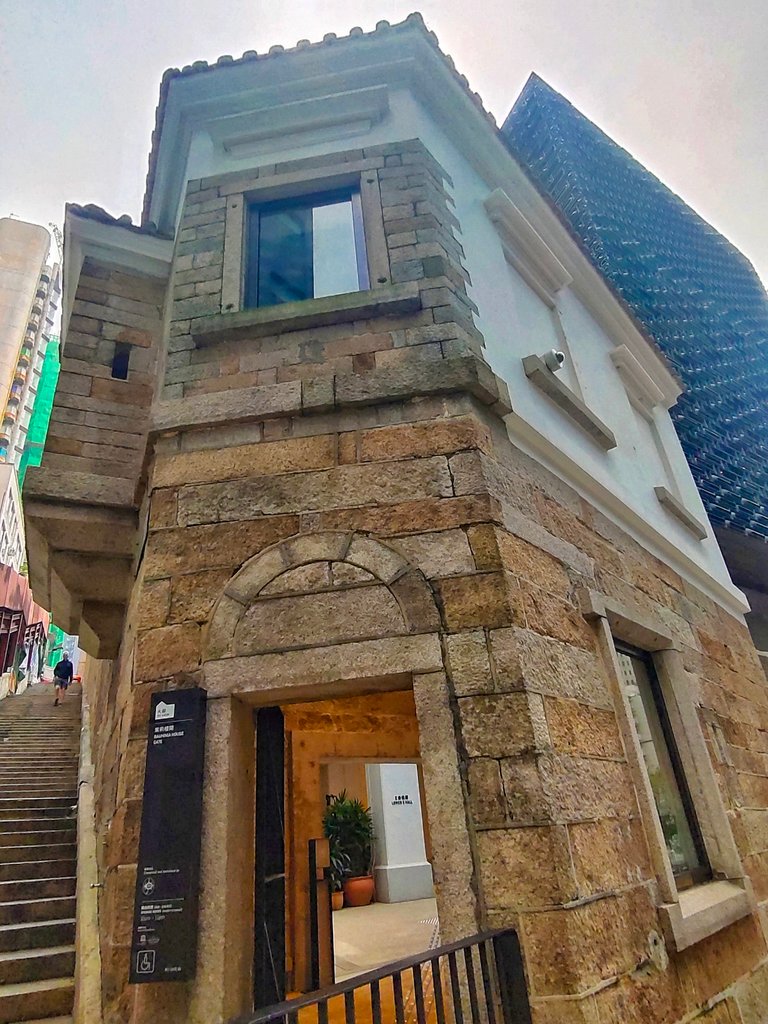
At the back of JC Cube is the Bauhinia House, the former guardhouse which became a halfway house for women's rehabilitation in later years. In the current year, it is one of the entrances to the compound.
The Mortuary
I happened to enter this place and at the end of it was the former mortuary. If my memory serves me right, it is located inside D Hall. Back in the day, the dead bodies of prisoners were sent here to be examined by the coroner or medical examiner. The table used to examine dead bodies is still intact up until now, but the room is closed and visitors aren't allowed to enter the place.


I failed to visit the Married Inspectors Quarter and Ablutions Block.
—
EXHIBITIONS, STORY-TELLING SPACES, SHOPS, WORKSHOPS
Tai Kwun as a center of heritage and art is also a venue for different events and different art workshops. Attending workshops is not free. Those who are willing to learn art should pay a certain amount and book in advance.
Touch Ceramics workshop for pottery making

This is Bonart, for art and bonsai decors and gift items. The items in this shop integrate nature into a lifestyle and also holds workshops for those who want to learn bonsai making and other crafts for indoor decor and gift ideas.

Art Police workshop for kids

Different shops and restaurants are also part of the attractions.
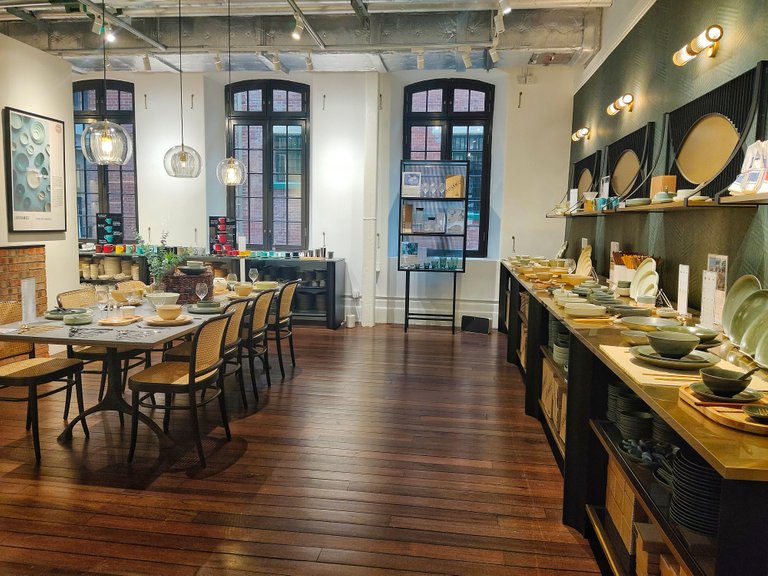



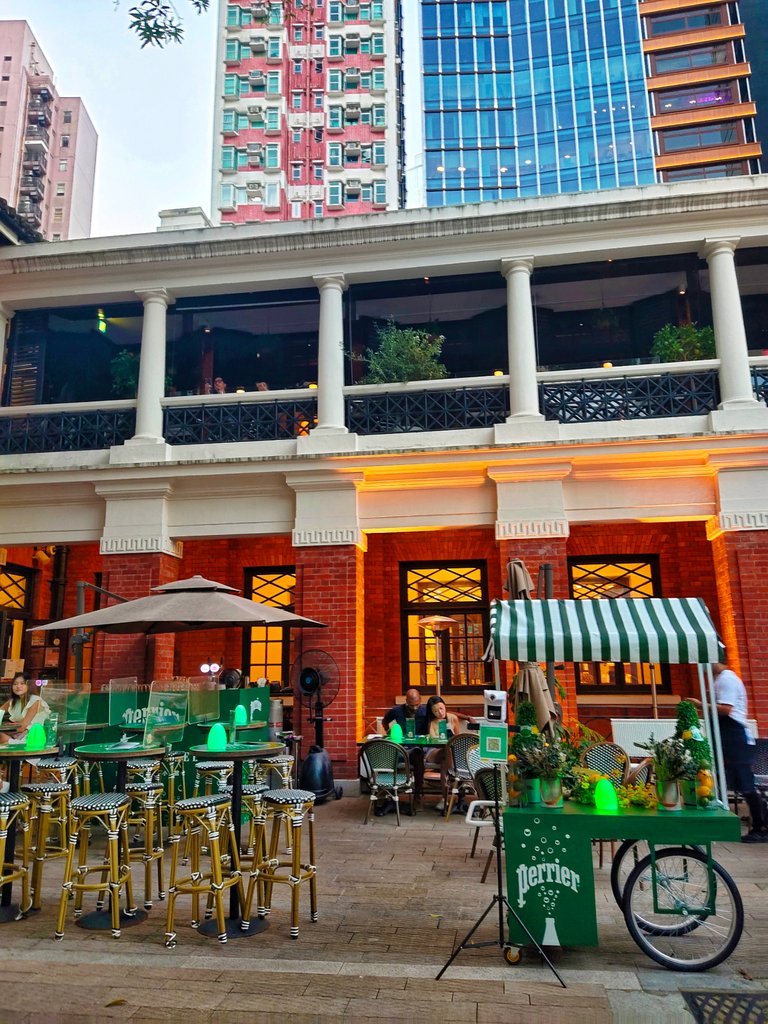
Check out my blog about Loveramics and PAP Studio, you will definitely love their artistic products.
You can also check other shops and fine dining restaurants you may want to try in this compound here.
There are different storytelling spaces located on different sites that allow visitors to learn the history of this place, the restoration process, and past events, and some are shown within its walls.


At night, the Parade Ground will be transformed into another setting. Some stage shows, art, and music festivals are sometimes held on this open ground and they are usually for free.

I missed watching this Art Festival show as the schedule was quite late for me and my curfew was at eight.

The Inner Glow was the first art exhibition I witnessed on the Parade Ground. This was during the Chinese New Year season. Animated images were projected on the white facades of the Barrack Block. You can see more photos and the video of the exhibition by clicking here.

Another breathtaking art exhibition I witnessed was Breathing with Trees. This was held at the duplex studio during the winter season last year. This exhibition reminded the public about the significance of trees in our daily life.
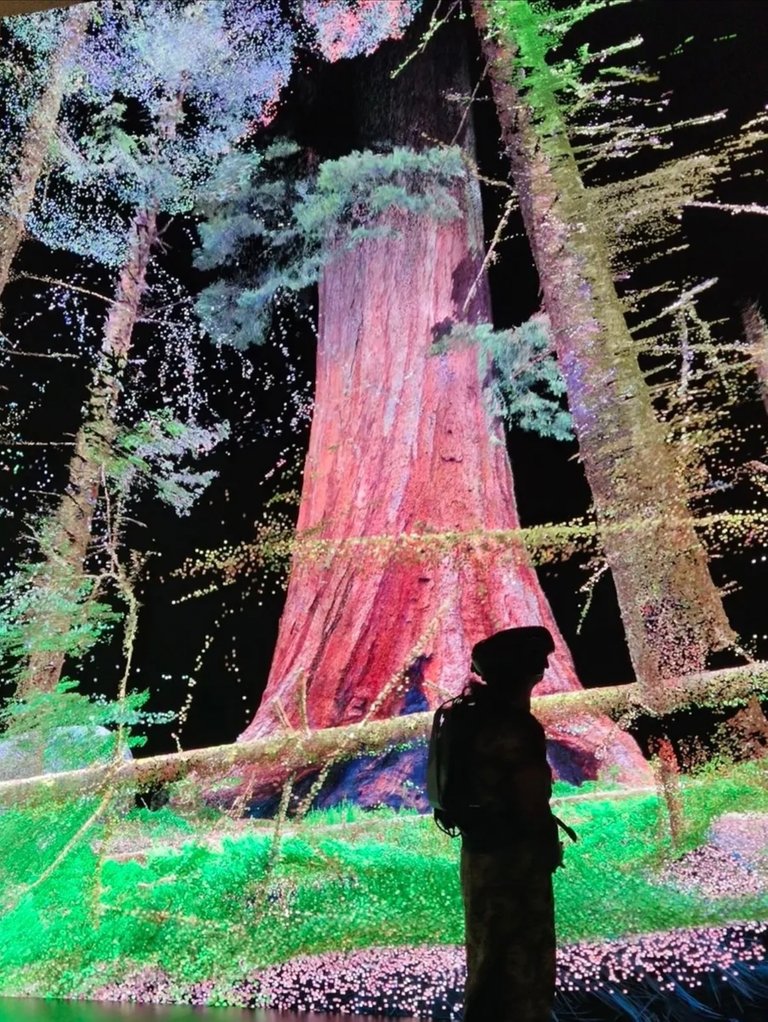
You can watch the VR exhibition here and feel like you are truly breathing with trees, or read my blog about the exhibition in the link above.
To enter the whole compound is free of charge making it perfect for family and friends for strolling, especially on holidays. While exploring the historic site, you would feel as if you are transported back in time. This is also the best spot to learn Hong Kong's history and see impressive architecture and art exhibitions. I must recommend this to those who are planning to visit Hong Kong someday to add this to their itinerary. To get there is so easy and will give you a chance to ride on the world's longest covered walk escalator at Mid-Level Central. It's the third stop after riding the series of escalators from Queens Road. This place, I should say, is a must to visit in Hong Kong.
I hoped you like my virtual tour for today. Feel free to check the attached links here to read my other blogs taken in this historic compound.
Thanks for stopping by. See you in my next travel blog.
(All photos are mine)
References about the history of each historic site are found here 👇.
https://www.taikwun.hk/en/taikwun/heritage_conservation/buildings

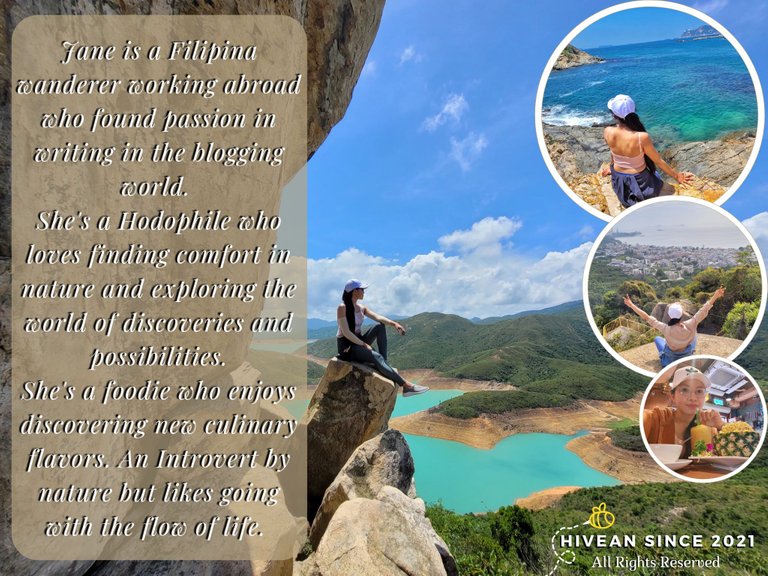
Join her on her quest for self-discovery and wanderlust. If you like her content, don't hesitate to upvote, drop a comment, reblog, and follow for more wonderful adventures. |
|---|
You can also reach me on my socials and let's be connected:
•Facebook
•YouTube
•Twitter
•noise.app
•read.cash
▶️ 3Speak









